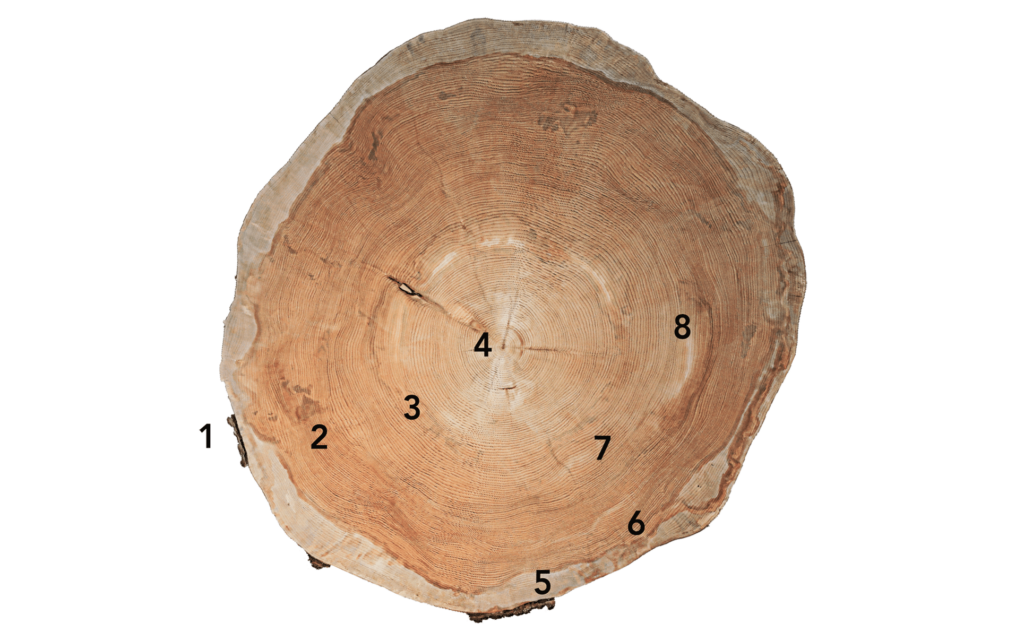DIFFERENT PARTS OF A 200-YEAR-OLD ROUNDEL
Understanding the anatomy of a log is a fundamental aspect of forestry and woodworking. A log, in this context, represents a raw section of a tree trunk, harvested for various purposes, from building construction to crafting furniture or floors.
Delving into the intricacies of a log’s structure, including its growth rings, bark, and core, provides a deeper appreciation for the natural materials that have been used for generations to build, create, and manufacture wood products for our homes and commercial spaces.
Below we define different parts of the log seen on this 200-year old cross section.

1. INNER BARK/PHLOEM
Transports food from the leaves to various parts of the plant for growth and energy before becoming part of the outer bark.
2. THE RINGS
Rings tend to be further apart in softwoods (e.g Cedar) than hardwoods (e.g Oak) as softwoods grow more quickly.
3. HEARTWOOD
Retired aged core of the tree, which develops from 14 years onwards. Usually darker and harder than sapwood, it gives the tree its strength.
4. PITH
The elementary seed growth of the infant tree and the oldest part. Known as juvenile wood, it later becomes thin and hollow.
5. OUTER BARK
The trees protection from the outside world. It is continually renewed to guard against insects, balance the tree’s moisture and manage temperature.
6. SAPWOOD
The outer zone of the tree through which sap and water travel. Known as the new wood, it is spongier in texture than heartwood due to the moisture content.
7. MEDULLARY RAYS
The hair-like lines that radiate out from the pith, the medullary rays are thin vessels that carry nourishment from the descending sap to the interior of the tree.
8. THE GRAIN
The direction of wood cells is created into a variety of patterns caused by the tree’s growth through the seasons.